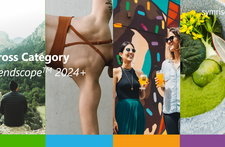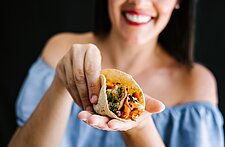Around the world, consumers are increasingly incorporating nature into their eating and drinking decisions. Yet that doesn’t mean consumers only want to eat raw ingredients that come straight from the Earth. In many cases, consumers are more so thinking about how their choices affect nature overall, as well as looking for ways to be more connected to nature.
RELATED: 12 Global Trends Guiding the Food and Beverage Industry for 2021
For example, food that incorporates natural products like edible flowers can help people feel closer to nature, even when incorporated into a dish that has undergone a bit of processing. Similarly, a packaged product that saves food from otherwise being thrown out could hold more appeal than even, say, a salad that uses unsustainable ingredients, as consumers want to ultimately support a healthy, vibrant environment.
From chips to smoothies to breads, there is a wide range of products that can tie into the natural world and align with consumers’ desire to protect nature. Among the following three trends inspired by Natural Goodness, the first two played a role in our previous TrendScope Report, but the third one touches on a newer movement.
Touching Nature
In the modern world, people spend a lot of time indoors. And that’s not just because of the pandemic. Over 30 years ago, the U.S. Environmental Protection Agency found that Americans spend around 90% of their time indoors. Add in the continued urbanization and digitalization of life around the world, and it’s no wonder that people are craving nature.
One way this desire to connect with nature has played out has been with the rise of houseplants, which can include growing herbs. Another is to incorporate nature more into food. Not only do consumers often want a farm-to-table type of experience, but they also want to physically see and taste nature on their plate, such as with edible flowers or designs that mimic nature.
To that point, one trend that took off in 2020 has been Flower Focaccia. A baker who goes by the name Blondie + Rye on Instagram helped lead this trend with her beautiful, floral-inspired breads.
Stay informed on the latest trends, subscribe to our Weekly Newsletter, CLICK HERE!
Second Love
Part of being in touch with nature also means recognizing the high amount of food waste that often occurs at various points of the consumption lifecycle. From using up leftovers in the fridge instead of throwing them out, to purchasing from food manufacturers that minimize waste in their own processes, consumers are looking to eat and drink more consciously. On Pinterest, searches for “low-waste lifestyle” rose by 446% year over year.
That means food and beverage brands that reuse or upcycle items, and ideally move toward zero-waste, can stand out. For example, Nudie Snacks in the UK sells cauliflower crisps made from “wonky” cauliflower that might not otherwise be sold due to its appearance.
Whole Foods has also tapped into this trend, such as by sharing a recipe for “The Whatever Smoothie,” which has flexible ingredient options so that people can make a smoothie based on whatever they have available.
Climavore
An early-stage yet powerful trend related to nature is the “climavore” movement, where consumers eat and drink based on supporting a healthy climate. Younger generations are particularly motivated to fight climate change and consume more eco-friendly options.
In many cases that means turning to plant-based foods. However, that doesn’t mean all these consumers are going fully vegan, but they are interested in limiting the carbon footprint of their diets. That means brands can stand out not just for being plant-based but also by choosing specific ingredients that are aligned with a healthy planet, such as highlighting a fruit or vegetable that grows with minimal resources.
Non-vegan options can also appeal to climavores when there’s a sustainability component. For example, Holycrab, a Berlin-based startup, sells crab products that help eliminative an invasive crab species that lack natural predators, which can disrupt ecosystems.
________________________________________
As these examples show, nature can be incorporated into food and beverages in so many different ways. By helping consumers feel more connected to nature, ideally by both having natural elements while strengthening the natural world, food and beverage brands can make a positive impact while appealing to more customers.
To learn more about our TrendScope 2021+ Report, reach out to a member of our team!





